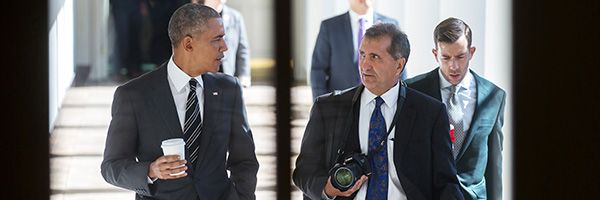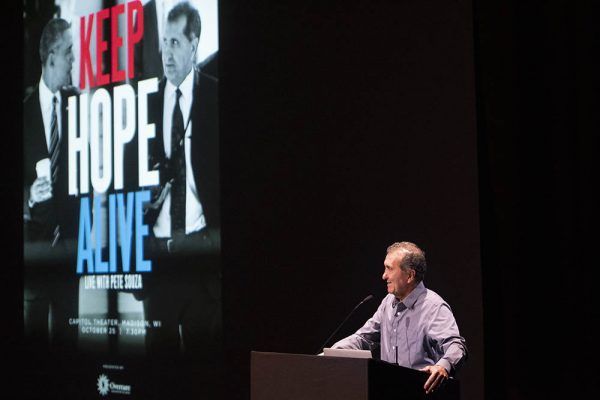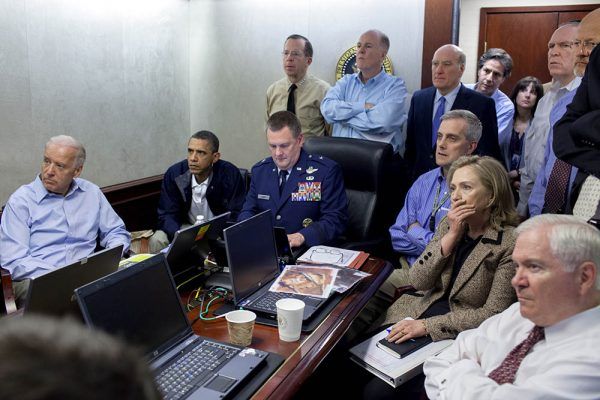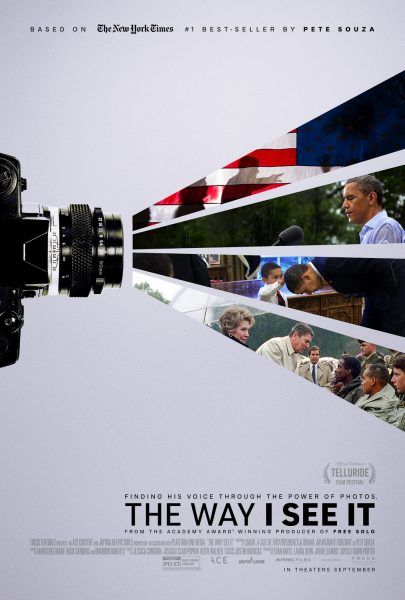The contrast between the Obama Presidency and the Trump Presidency is so striking that even the most passive of political observers could not fail to miss it. And yet we now have Dawn Porter’s excruciatingly obvious documentary The Way I See It to provide warm and fuzzy feelings for Obama supporters who long for the past and are horrified by the present. Told from the perspective of Obama’s official White House photographer Pete Souza, the documentary is a nostalgic look at the Obama years contrasted against the cruelty and incompetency of Trump. But rather than illuminating the role of photojournalism of the complexities of the Presidency, The Way I See It functions largely as a panacea for deflated liberals who long for the days when we had a normal President. It’s a documentary solely for people who want affirmation for their political ideology rather than examining what it means to follow a Presidency.
Pete Souza became a household name among liberals following the inauguration of Donald Trump. Through his Instagram feed, Souza would “throw shade” by taking the day’s news or some stupid tweet from Trump and then posting a photo contrasting it against Obama. So, for example, if Trump whined about “Obama spied on me!”, Souza would post a playful picture of Obama peering through a peephole. For Democrats still reeling from Trump’s surprise election, Souza’s Instagram provided a nice tonic and escape to the days when they didn’t have to worry about the President’s behavior. The documentary then tries to apply this logic to Presidential behavior at large showing Souza’s work for the Reagan Presidency and making the case for these photos as a first draft of history.
What’s weird about positioning these photos as “history” is that they were always meant as propaganda. History and journalism are about capturing unfortunate truths. It’s great that Souza was always in the room capturing personal moments, but the moments that we saw were still crafted and released to paint a particular portrait. For example, for all of the “honest” Obama moments depicted, there’s not a single photo of him smoking. I don’t really care that Obama is a smoker, but it’s part of his private life that Souza claims to have captured. But smoking is unpopular, Obama cannot be captured doing an unpopular thing, therefore that photo does not exist. That’s not history; that’s propaganda, and while it’s innocuous enough, the documentary shouldn’t labor under the belief that Souza’s photography is some objective document of a perfect President.
Instead, the documentary plays like a feature film version of that Instagram feed or Souza’s book Shade. It’s meant to assuage and comfort liberals who miss Obama by highlighting that Obama is good and Trump is bad, and that makes The Way I See It feel not like an illuminating piece of cinema, but rather an escape for people defined by their political ideology. You can watch The Way I See It and not learn a single new thing about Barack Obama’s Presidency because the way Souza “sees it” is that the Presidency is defined by nothing more than empathy. The entire argument boils down to “Obama was good because he had empathy, and Trump is bad because he lacks empathy,” to which you can really only respond, “No fucking shit.”
What bothers me about The Way I See It is that I feel the documentary has an anesthetizing effect. What we need these days is not homilies about Presidential image, but education on what the Presidency means. To the average Trump voter, it seems like Trump has empathy because he shares their grievances. He gets up on a stage and rants about how he hates the things they hate, and that is what qualifies as “empathy” to them. If you have a photojournalist and White House photographer as the center of your movie, then work on understanding that job, how it’s crafted, it’s shortcomings, and approach it honestly. Instead, The Way I See It is about how Obama made us feel good, and wouldn’t it feel good not to feel bad anymore. And if your case is about how Presidents work on our emotions, then make your documentary about that rather than playing into the emotional framework.
The Way I See It is at its best when it talks about the work of photojournalism and how photos convey a particular moment, but even Souza admits that his work in Obama’s White House wasn’t really one of photojournalism. However, I disagree with his take that he was also capturing “history” since history is about contradictions and hard truths, not a romanticized view of the Presidency. That romanticization has its place (I love The American President and Dave), but in a documentary it comes off as shallow and as product for people who want to see the President as a hero and savior rather than public servant in a complex government. It’s fine to see the triumphs of passing the Affordable Care Act, but what were the bargains and trade-offs? In trying to show the glories of the Presidency, The Way I See Itobscures its difficulties, which, ironically, made the position look so inviting to a narcissist like Trump.
Rating: D-




